Hand-made Quick start Guide | is it really difficult to teach yourself how to make coffee by hand? How to teach yourself how to make coffee by hand
Professional coffee knowledge exchange more coffee bean information please follow the coffee workshop (Wechat official account cafe_style)
Pour over can be said to be the most basic and simple way of brewing boutique coffee. There are no complex machines, just hot water, filter and coffee. A cup of fresh coffee can be brewed in just a few minutes.
Hand brewing is also the most exciting part of boutique coffee, by adjusting the different parameters of brewing, including: grinding degree, water temperature, water speed and time, enough to change the final taste of coffee. This article will introduce the basic concepts, so that you can have enough knowledge to start making the first cup of coffee after reading this article!
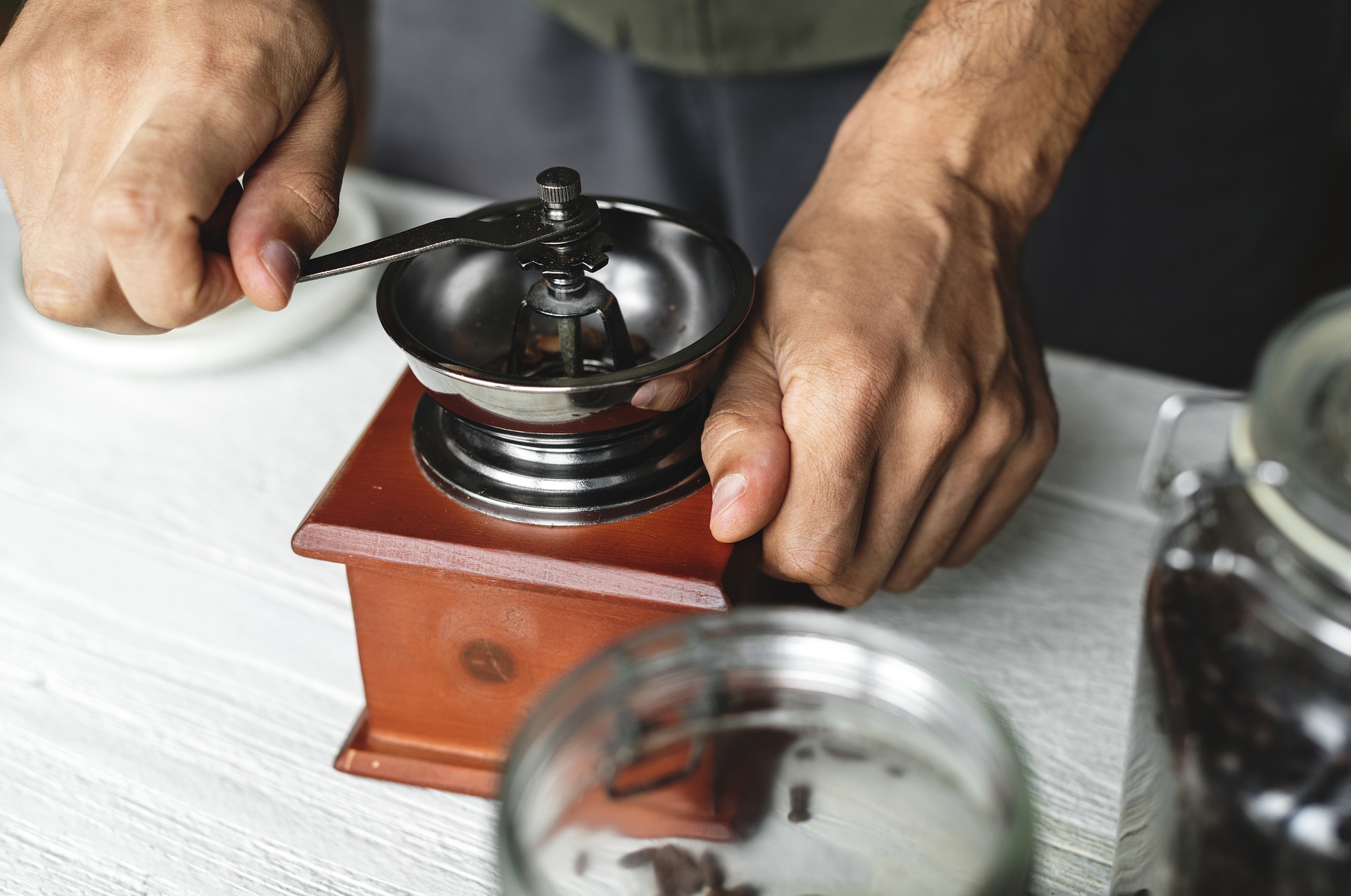
Hand flushing begins with grinding, and coffee beans have to be turned into coffee powder before they can be converted into a cup of coffee. There are mainly two kinds of grinders (bean grinders). One is to make coffee by rotating the blade at high speed and in a random way. The other is to grind the coffee beans systematically in the middle of the plate by turning two cutters. Some of these theories are not discussed here, now just remember that fine coffee will only use the latter-knife-head type, taking its controllability and high average degree.
The thickness of grinding will affect the extraction of cooking. By adjusting the gap between the two cutters, the finer the gap, the finer the powder will come out. The finer the powder, the larger the area where hot water can come into contact with coffee. Hand flushing usually uses medium to medium-fine powder, probably between fine salt and fine sugar. Don't be too nervous about how to reach the right thickness. Learning to make coffee is actually learning to adjust your hands with your sense of taste. As long as you learn the theory well, you will know how to adjust it later.
After there is coffee powder, the next step is to prepare hot water, the water temperature will affect the taste of the coffee, in order to facilitate memory and operation, you can simply set the temperature between 85 and 90 degrees to make your first cup of coffee. Later, we will search the editor's earlier articles about the relationship between temperature and flavor.
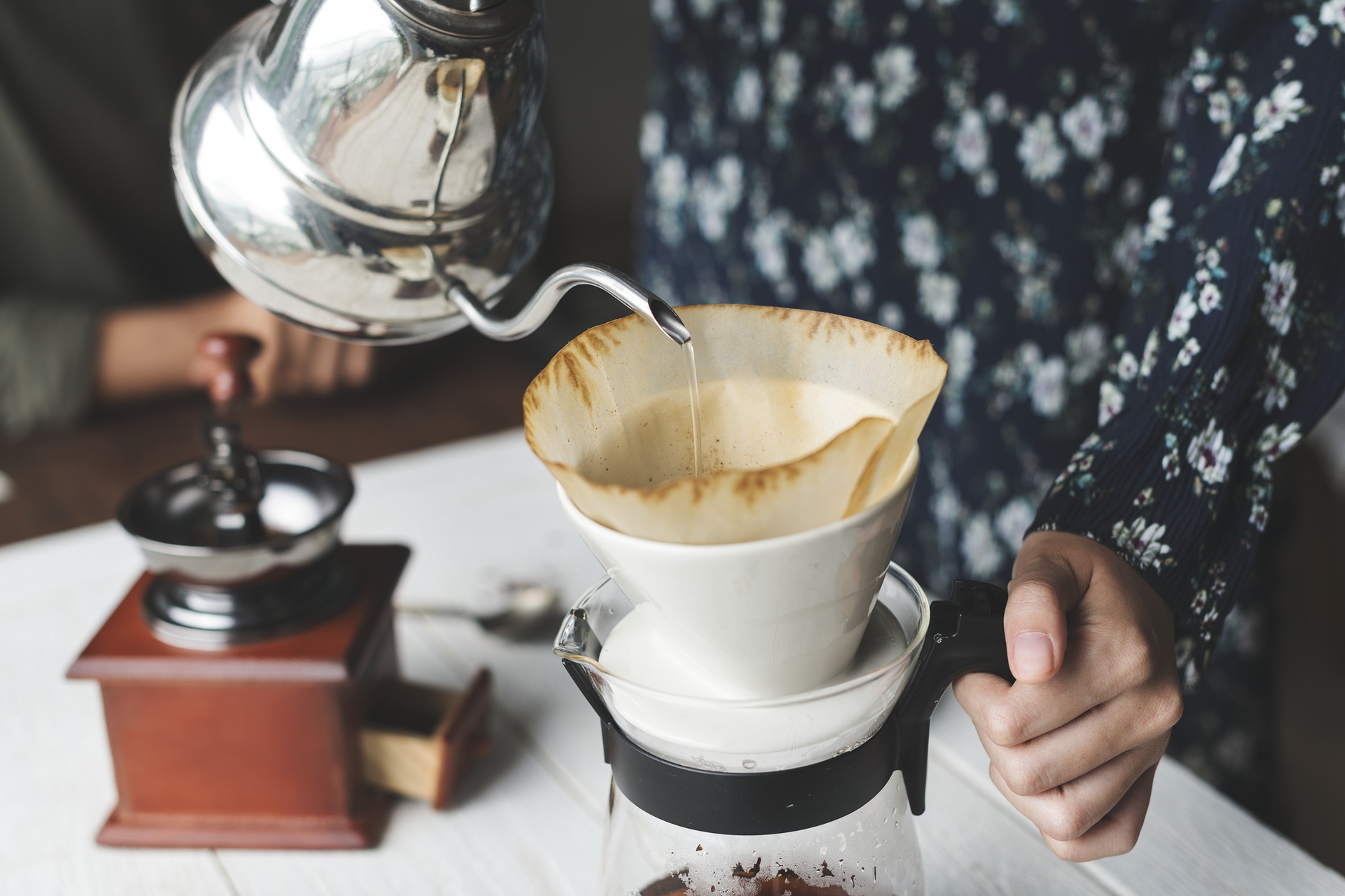
With coffee powder and hot water, we can brew out the aroma of coffee beans and turn them into our favorite coffee drinks. Coffee powder should be filtered to separate the coffee liquid from the coffee grounds. Different filter designs have their own water injection requirements, and under different requirements, the goal is to achieve the average taste of extracted coffee powder. Remember one key point: "average", which is of great help to understand and practice water injection techniques in the future.
The most common hand filter cup of boutique coffee is the Japanese Hario V60, V-shaped filter paper, which falls into the cup through a large water hole. It is characterized by high playability, and users can change the flavor characteristics of the extraction by changing the intensity, direction and rhythm of water injection. To make a good cup of coffee with V60, you often need to accumulate some experience and fully understand the impact of each brewing parameter on the taste. Therefore, we do not recommend that beginners self-study V60, as its road is more rugged than other filter cups.
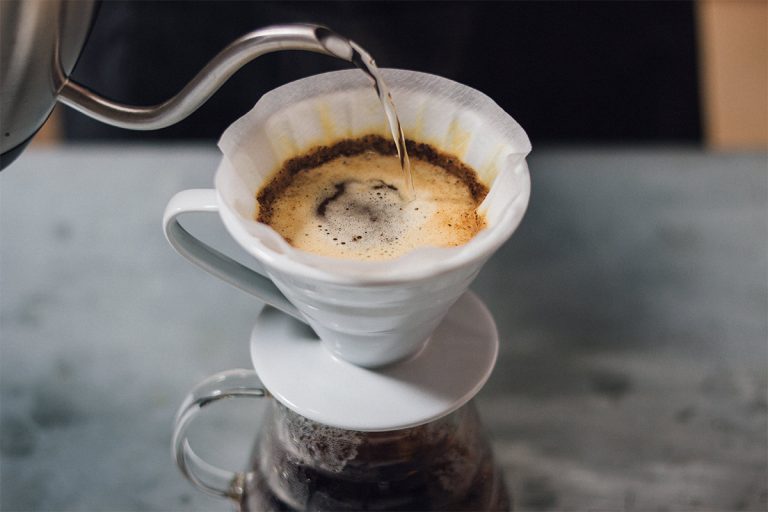
Common Hario V60 filter cup
Beginners hand punch, with fine holes of the hand filter cup can have a higher error buffer space (fault tolerance rate). Because in the design of the filter cup, it has been calculated that the pore size has been used to limit the flow velocity, and the influencing factors such as the speed and uniformity of water injection are relatively not obvious. For example, Kalita Wave (commonly known as cake cup), which is usually recommended for beginners, falls into this category.
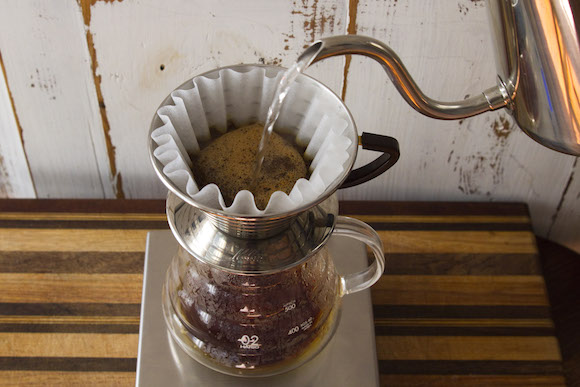
Recommended Kalita Wave for self-study
No matter which kind of filter cup is used, the water injection is usually completed in 2-4 minutes. Water injection can be divided into two parts, the first step is to use a small amount of water, wet all the coffee powder, wait for about 30-60 seconds, let the carbon dioxide out of the coffee powder, this step is blooming. The theory is to replace the space occupied by carbon dioxide with water so that the second part of the water can be injected to extract the taste of the coffee.
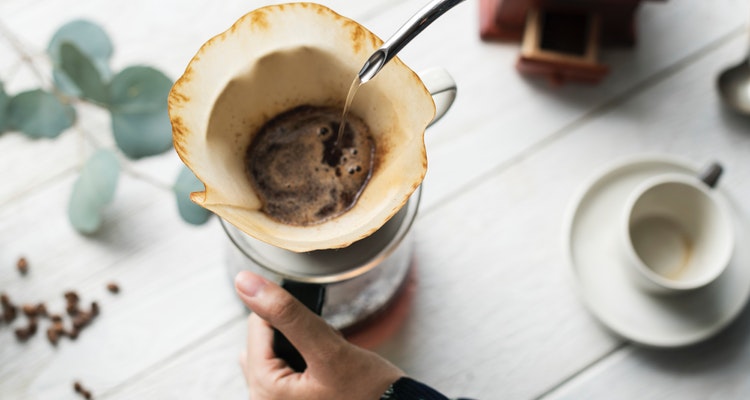
The closer the fresh beans are to the baking date, and the deeper the coffee beans are, the more bubbles will come out.
The second part of water injection, the need to learn is a stable technique (consistency). Time and water are the most important parameters, so handmade coffee is generally recorded by electronic scales and timers. A simple example is that when the coffee brewed with 2 minutes / 200g water / 15g powder is too sour and light, it will take longer and more water to adjust the taste next time.
There are many different genres of hand-brewed coffee, especially the water filling method of V60. But for beginners of fine coffee, these genres tend to be daunting. In fact, hand brewing can be very simple, using a water cooler to make prefabricated earbag coffee can also be regarded as a kind of hand brewing. The most important thing is to let our tongue judge whether the coffee is good or bad, not whether the posture of the hand is graceful and moving enough. Finally, one thing is for sure, that is, good coffee beans with freshly ground coffee is absolutely different from commercial coffee.
The editor often encourages people to teach themselves how to make coffee at home. The reason is that "making a cup of coffee for yourself must be strong!" ". This can be full of emotion and a sense of achievement, or it can be authentic and down-to-earth in the taste. This kind of "strong" feeling is sometimes difficult to be given by other cooking methods.
In order to brew a "strong" cup of coffee, there are many factors to consider, such as grinding particle size, water temperature, water powder ratio, coffee bean type, coffee bean processing method, coffee bean roasting. Wait. If you encounter problems, you might as well communicate with your colleagues and learn together. Of course, you can leave a message to the editor. The editors will try their best to answer it.
END
Important Notice :
前街咖啡 FrontStreet Coffee has moved to new addredd:
FrontStreet Coffee Address: 315,Donghua East Road,GuangZhou
Tel:020 38364473
- Prev

What is the method of lactic acid fermentation? What are the characteristics of coffee treated by lactic acid fermentation?
Lactic acid fermentation treatment (Lactic Fermentation) is a classic treatment of palm trees and big-billed bird estates. Lactic acid fermentation is an anaerobic method to obtain higher concentration of lactic acid bacteria in the process of coffee fermentation. Because the ideal flavor of coffee is mellow, high sweetness, caramel, wine acidity and silky taste, which all depend on the lactic acid in the fermentation process.
- Next
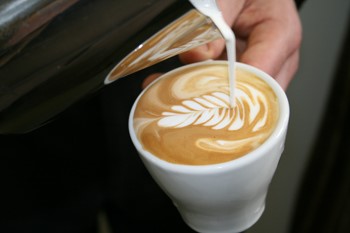
[beginner's Guide to simple Coffee pattern drawing] introduction and disassembly of drawing materials
For more information on coffee beans, please follow the dense milk bubbles produced by the hot steam in the coffee workshop (Wechat official account cafe_style), inject the base of espresso (Espresso), use the coffee oil (Crema) on the espresso to support the fine milk bubbles composed of tiny bubbles, match the barista's flower drawing skills, and finally draw a beautiful picture on the surface of the latte.
Related
- What is the meaning of lactic acid fermentation with coffee bean treatment?
- How to judge the state of foam by sound?
- How does the latte pull out the unicorn pattern? Come to get for a little trick to improve the flower pull!
- Will flower pulling affect the taste of the latte?
- Do you know the history of coffee?
- The difference between honey treatment and sun washing what is raisin honey treatment?
- What kind of milk can a novice use to make coffee foam to keep the foam longer? The correct method and skills of milking tutorial sharing
- Why do washed coffee beans taste sour? Flavor characteristics of washed Coffee
- Introduction to the skill of how to practice the size and height of water injection around the circle of hand-brewed coffee
- How do beginners practice coffee flower drawing from scratch?

